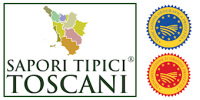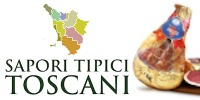Our network:
Sunday 22 December 2024
Piazza del Campo
Built over an area that was once an open field, hence its name ‘campo’, Piazza del Campo is one of the world’s finest examples of secular architecture and is the precise meeting point of the three hills on which Siena is built. The earliest documented mention of the area dates back to 1169, when the field is listed as having been acquired by the community of Siena as an area to be used for fairs, markets and public celebrations during the rule of the Governo dei Ventiquattro (1236-1270). But the history of the piazza begins in earnest with the construction of the Palazzo Comunale (or Palazzo Pubblico) at the time when the city was ruled by the Governo dei Nove (1287-1355). One of the most stable governments in Italy at the time, the Governo dei Nove began considering a ‘neutral’ seat for the government of Siena and designs were drawn up to create a suitable layout around the new government buildings.
The semi-circular area occupied by Piazza del Campo covers a difficult and irregular terrain, making this masterpiece of harmony and elegance all the more remarkable an achievement. The buildings that surround the square have all been built according to specifications laid down as early as 1297, which stipulated certain strict limitations of height and adornment. The church of Saint Peter and Paul, which faced onto the square, was in fact demolished because it did not comply with these rules.
The paving of the square was begun in 1327 and completed in 1349 and is in unique ‘knife’-shaped bricks. The shell-like division of the brick paving into nine sections outlined in white stone dates from the time of the Governo dei Nove in the 14th century and represents the city’s nine governors, bringing the eye of the viewer naturally towards the Palazzo Pubblico and the Torre del Mangia.
Just like in the Middle Ages, Piazza del Campo is the centre of Siena. All the town’s main streets lead into the square, which stands on the boundary between the Terzo di Città and the Terzo di San Martino quarters. Through the centuries this square has witnessed all of the city’s major historical events and has been the backdrop to a host of public events and games, from the Giochi dell’Elmora to the Pugna or the Bufale race. Today it is perhaps best known for the Palio, held each year on July 2nd and August 16th – a precipitous horse race that is preceded by a colourful pageant. The city’s 17 contrade, or competing factions in the race, each border on the square, which is utterly transformed during the Palio into a seething, passionately cheering crowd.
At other times of year, the Piazza del Campo comes alive during the Carnival celebrations in February and the arts festival organised by the town council in the final week of August.
The semi-circular area occupied by Piazza del Campo covers a difficult and irregular terrain, making this masterpiece of harmony and elegance all the more remarkable an achievement. The buildings that surround the square have all been built according to specifications laid down as early as 1297, which stipulated certain strict limitations of height and adornment. The church of Saint Peter and Paul, which faced onto the square, was in fact demolished because it did not comply with these rules.
The paving of the square was begun in 1327 and completed in 1349 and is in unique ‘knife’-shaped bricks. The shell-like division of the brick paving into nine sections outlined in white stone dates from the time of the Governo dei Nove in the 14th century and represents the city’s nine governors, bringing the eye of the viewer naturally towards the Palazzo Pubblico and the Torre del Mangia.
Just like in the Middle Ages, Piazza del Campo is the centre of Siena. All the town’s main streets lead into the square, which stands on the boundary between the Terzo di Città and the Terzo di San Martino quarters. Through the centuries this square has witnessed all of the city’s major historical events and has been the backdrop to a host of public events and games, from the Giochi dell’Elmora to the Pugna or the Bufale race. Today it is perhaps best known for the Palio, held each year on July 2nd and August 16th – a precipitous horse race that is preceded by a colourful pageant. The city’s 17 contrade, or competing factions in the race, each border on the square, which is utterly transformed during the Palio into a seething, passionately cheering crowd.
At other times of year, the Piazza del Campo comes alive during the Carnival celebrations in February and the arts festival organised by the town council in the final week of August.
Booking.com
• Siena in the Renaissance
• Siena in the Middle Ages
• Siena in Antiquity
• Town Map Siena
• Farm Holidays and Country Houses
• Residence, Apartments
• Bed & Breakfasts
• Historical Residences
• Last Minute Siena
• Restaurants
• Pubs & Wine Bar
• University for Foreigners
• Palazzo Chigi-Saracini
• Palazzo d’Elci degli Alessi
• Loggia della Mercanzia
• Palazzo Sansedoni
• Palazzo Chigi-Zondadari
• Fonte Gaia fountain
• Carthusian Monastery of Pontignano
• Forte di Santa Barbara
• The Duomo – The Cathedral of the Assunta
• Church of the Osservanza
• The Oratory of San Bernardino
• Church of San Francesco
• Short Biography of St Catherine of Siena
• St Catherine Sanctuary
• Church of S. Niccolò al Carmine
• Bologna-Buonsignori museum
• Accademia dei Fisiocritici
• I Musei Senesi
• The Palazzo Pubblico and the Torre del Mangia
• Piazza del Campo
• The Montagnola Senese and the Fortified Village of Sovicille
• The Castles of Belcaro and Quattro Torri
General information
• Town map • Siena in the Renaissance
• Siena in the Middle Ages
• Siena in Antiquity
Transport in town
• Map of Hotels in Siena • Town Map Siena
Transport out of town
• Train services
Where to Stay
• Hotels • Farm Holidays and Country Houses
• Residence, Apartments
• Bed & Breakfasts
• Historical Residences
OFFERS & LAST MINUTE
• Reservation Services Siena • Last Minute Siena
Where to eat and drink
• Disco Dancing • Restaurants
• Pubs & Wine Bar
Education
• Siena University • University for Foreigners
Art and monuments
• Palazzo Piccolomini and Palazzo delle Papesse • Palazzo Chigi-Saracini
• Palazzo d’Elci degli Alessi
• Loggia della Mercanzia
• Palazzo Sansedoni
• Palazzo Chigi-Zondadari
• Fonte Gaia fountain
• Carthusian Monastery of Pontignano
• Forte di Santa Barbara
Art and religion
• Church of Sant’Agostino • The Duomo – The Cathedral of the Assunta
• Church of the Osservanza
• The Oratory of San Bernardino
• Church of San Francesco
• Short Biography of St Catherine of Siena
• St Catherine Sanctuary
• Church of S. Niccolò al Carmine
Museums and galleries
• The Museo Civico • Bologna-Buonsignori museum
• Accademia dei Fisiocritici
• I Musei Senesi
Art and tourist attractions
• Cappella di Piazza • The Palazzo Pubblico and the Torre del Mangia
• Piazza del Campo
• The Montagnola Senese and the Fortified Village of Sovicille
• The Castles of Belcaro and Quattro Torri
Booking.com
• The July and August Palio
• The Contrade
• The Days of the Palio
• The Drappellone
• The Eve of the Palio
• The Corteo Storico Procession
• The Race
• The Patron Saint and Oratory of Each Contrada
• Weekly Appointments in each Contrada from April onwards
• Croce del Travaglio Place
• From Piazza del Campo to the Duomo Along Via di Città
• The Curves of Piazza del Campo
• Costarella dei Barbieri street
• Borgo d’Ovile
• The Terzo of Camollia – main streets
• Casato di Sopra e Casato di Sotto
• Terzo di San Martino district
• The Terzo di Città District - Via Stalloreggi, Via San Quirico
• The Terzo di Città District – The Pinacoteca Nazionale
• Golf courses in Siena and Tuscany
• Wedding in Tuscany - Siena area
• San Casciano dei Bagni
• Chianciano Terme
• Bagni San Filippo
• Bagno Vignoni
• Rapolano Terme - Baths of San Giovanni and Baths of the Antica Querciolaia
• The Countryside around Siena and its Thermal Water Springs
• SkiPass Monte Amiata
• WebCam sul Monte Amiata
• Meteo Monte Amiata
• The Val d’Orcia and Its Main Towns
• Pienza - the old town centre
• Montepulciano - the old town centre
• San Quirico d’Orcia - the old town centre
• Montalcino and the Land of Brunello
• The Abbey of Monte Oliveto Maggiore and the Crete
• The Crete Senesi
• Castellina in Chianti and the Via Chiantigiana Towards Siena
• Siena and Southern Chianti - from the Castle of Montalto to the Castle of Brolio and on to the Castle of Meleto
• The Chianti Hills - Monte Calvo, Monte Luco and Monte San Michele
• Cortona and the Valdichiana
• San Gimignano - The old town centre and its major sights
• The Val d’Elsa - Monteriggioni and Colle di Val d’Elsa
• Along the Old Via Francigena
• Oleum Evo online selling
• Sapori Tipici Italiani buy online now
• il Prosciutto Cotto
The Palio of Siena
• The Origins • The July and August Palio
• The Contrade
• The Days of the Palio
• The Drappellone
• The Eve of the Palio
• The Corteo Storico Procession
• The Race
• The Patron Saint and Oratory of Each Contrada
• Weekly Appointments in each Contrada from April onwards
Sightseeing
• Via di Città (formerly Via Galgaria), Siena’s Most Elegant Street • Croce del Travaglio Place
• From Piazza del Campo to the Duomo Along Via di Città
• The Curves of Piazza del Campo
• Costarella dei Barbieri street
• Borgo d’Ovile
• The Terzo of Camollia – main streets
• Casato di Sopra e Casato di Sotto
• Terzo di San Martino district
• The Terzo di Città District - Via Stalloreggi, Via San Quirico
• The Terzo di Città District – The Pinacoteca Nazionale
What to see & do
• Wedding in Siena • Golf courses in Siena and Tuscany
• Wedding in Tuscany - Siena area
• San Casciano dei Bagni
• Chianciano Terme
• Bagni San Filippo
• Bagno Vignoni
• Rapolano Terme - Baths of San Giovanni and Baths of the Antica Querciolaia
• The Countryside around Siena and its Thermal Water Springs
Monte Amiata
• Monte Amiata - nature tourism the year round • SkiPass Monte Amiata
• WebCam sul Monte Amiata
• Meteo Monte Amiata
Specials - Out of town
• Gift Ideas for traveling • The Val d’Orcia and Its Main Towns
• Pienza - the old town centre
• Montepulciano - the old town centre
• San Quirico d’Orcia - the old town centre
• Montalcino and the Land of Brunello
• The Abbey of Monte Oliveto Maggiore and the Crete
• The Crete Senesi
• Castellina in Chianti and the Via Chiantigiana Towards Siena
• Siena and Southern Chianti - from the Castle of Montalto to the Castle of Brolio and on to the Castle of Meleto
• The Chianti Hills - Monte Calvo, Monte Luco and Monte San Michele
• Cortona and the Valdichiana
• San Gimignano - The old town centre and its major sights
• The Val d’Elsa - Monteriggioni and Colle di Val d’Elsa
• Along the Old Via Francigena
Typical products
• Typical Tuscan flavours • Oleum Evo online selling
• Sapori Tipici Italiani buy online now
• il Prosciutto Cotto









